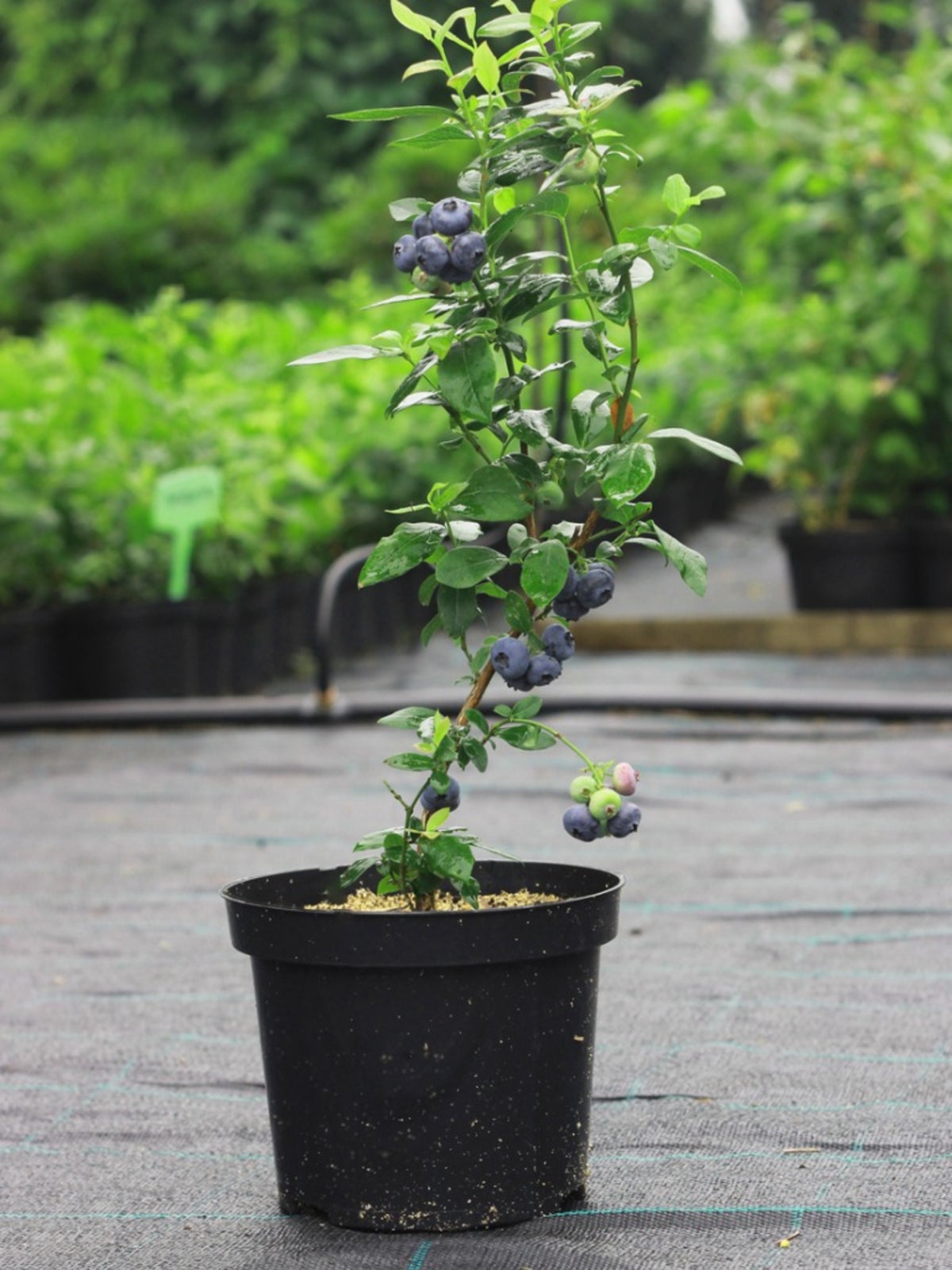Container Grown Blueberry Plants – How To Grow Blueberries In Pots


Can I grow blueberries in a pot? Absolutely! In fact, in a lot of areas, growing blueberries in containers is preferable to growing them in the ground. Blueberry bushes need very acidic soil, with a pH between 4.5 and 5. Rather than treating your soil to lower its pH, as many gardeners would have to do, it’s a lot easier to plant your blueberry bushes in containers whose pH you can set from the beginning. Keep reading to learn about how to grow blueberries in pots.
How to Grow Blueberry Bushes in Containers
Growing blueberries in containers is a relatively easy process, but there are some things to keep in mind beforehand to ensure your success. When selecting the variety of blueberry you’re going to grow, it’s important to pick a dwarf or half-high variety. Standard blueberry bushes can reach heights of 6 feet (1.8 meters), which is awfully tall for a container plant. Top Hat and Northsky are two common varieties that grow to only 18 inches (.5 meters). Plant your blueberry bush in a container no smaller than 2 gallons, preferably bigger. Avoid dark plastic containers, as this can overheat the roots. Make sure to give your plant plenty of acid. A 50/50 mix of potting soil and sphagnum peat moss should provide enough acidity. Another good mix is 50/50 sphagnum peat moss and shredded pine bark. Blueberry roots are small and shallow, and while they need lots of moisture, they don’t like sitting in water. Give your plant frequent light waterings or invest in a drip irrigation system.
Overwintering Blueberry Bushes in Containers
Growing any plant in a container makes it more vulnerable to the cold of winter; instead of being deep underground, the roots are separated from the cold air by just a thin wall. Because of this, you should subtract one number from your local hardiness zone when considering buying a container grown blueberry. The best way to overwinter your blueberry plant is to bury the container in the ground in mid-autumn in a spot that’s out of the wind and likely to experience a buildup of snow. Later in the autumn, but before the snow, mulch with 4-8 inches (10-20 cm) of straw and cover the plant with a burlap bag. Water occasionally. Dig the container back up in the spring. Alternatively, store it in an unheated building, like a barn or garage, with occasional watering.
Gardening tips, videos, info and more delivered right to your inbox!
Sign up for the Gardening Know How newsletter today and receive a free copy of our e-book "How to Grow Delicious Tomatoes".

The only child of a horticulturist and an English teacher, Liz Baessler was destined to become a gardening editor. She has been with Gardening Know how since 2015, and a Senior Editor since 2020. She holds a BA in English from Brandeis University and an MA in English from the University of Geneva, Switzerland. After years of gardening in containers and community garden plots, she finally has a backyard of her own, which she is systematically filling with vegetables and flowers.
-
 Moody Blooms For Spring: 8 Types Of Black Flowers To Add Drama To Spring Displays
Moody Blooms For Spring: 8 Types Of Black Flowers To Add Drama To Spring DisplaysFrom midnight burgundies to inky violets, several types of black flowers can enrich and embolden a spring display. Try these brooding bloomers for a moody garden
By Tonya Barnett
-
 Can Snake Plants Live Outside? Everything You Need To Know For Snake Plants Al Fresco
Can Snake Plants Live Outside? Everything You Need To Know For Snake Plants Al FrescoSnake plants can live outside given the right conditions, but be careful that they don't take over! Learn the best way to use snake plants in your landscape.
By Mary Ellen Ellis